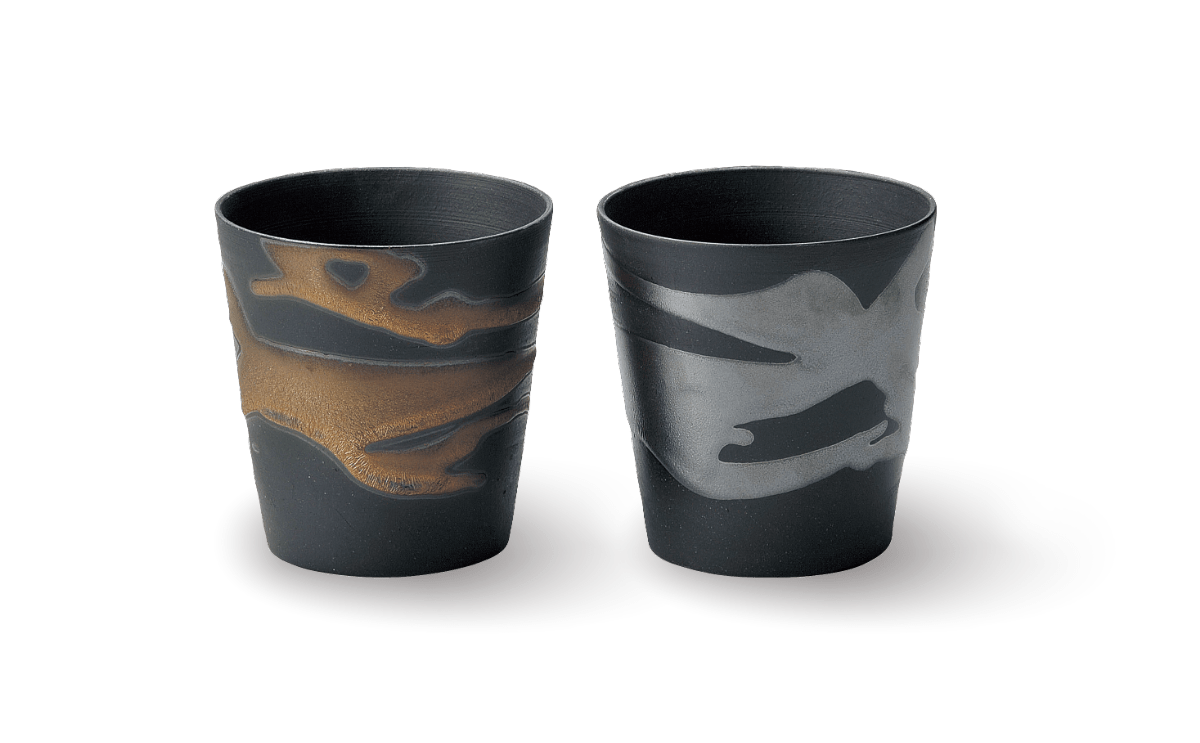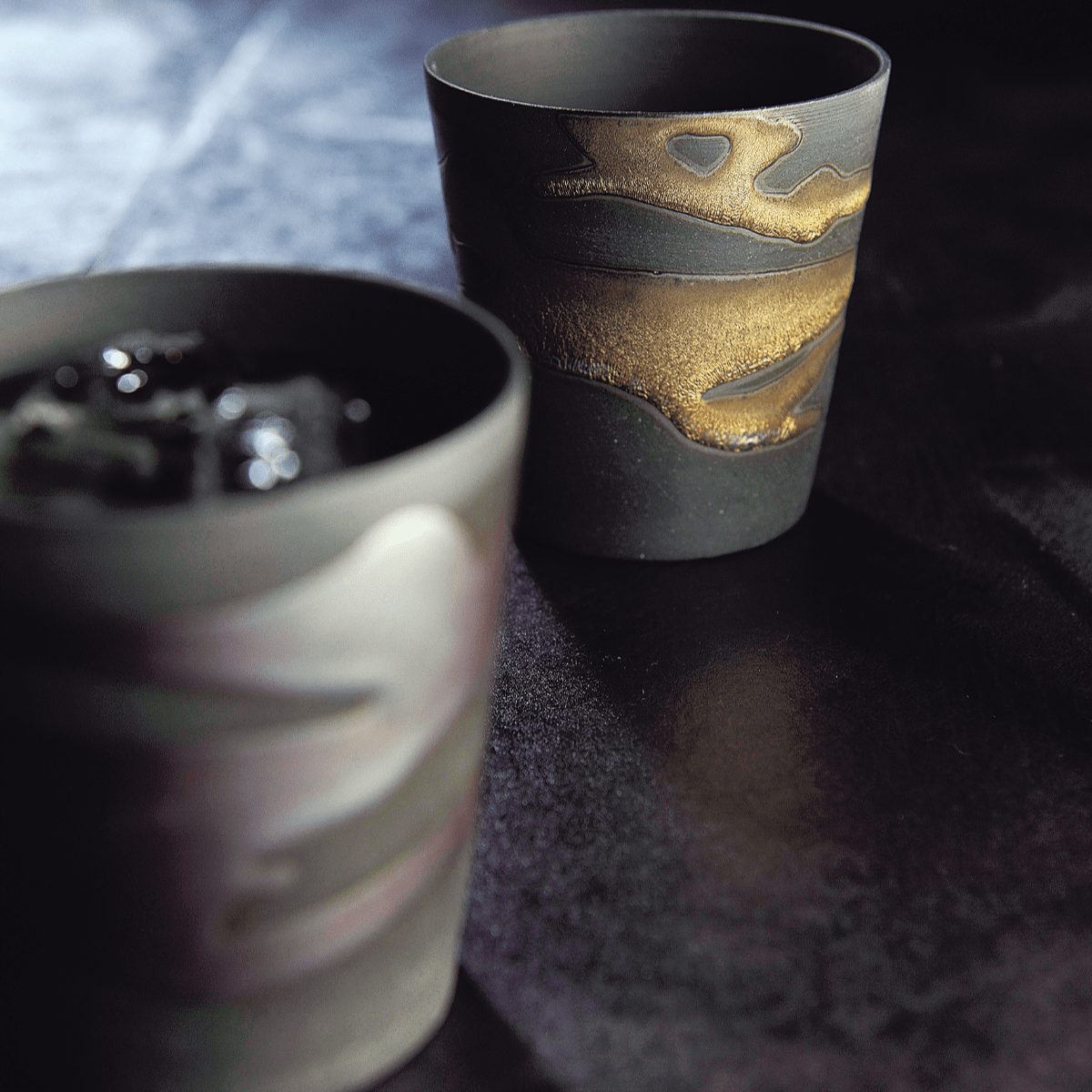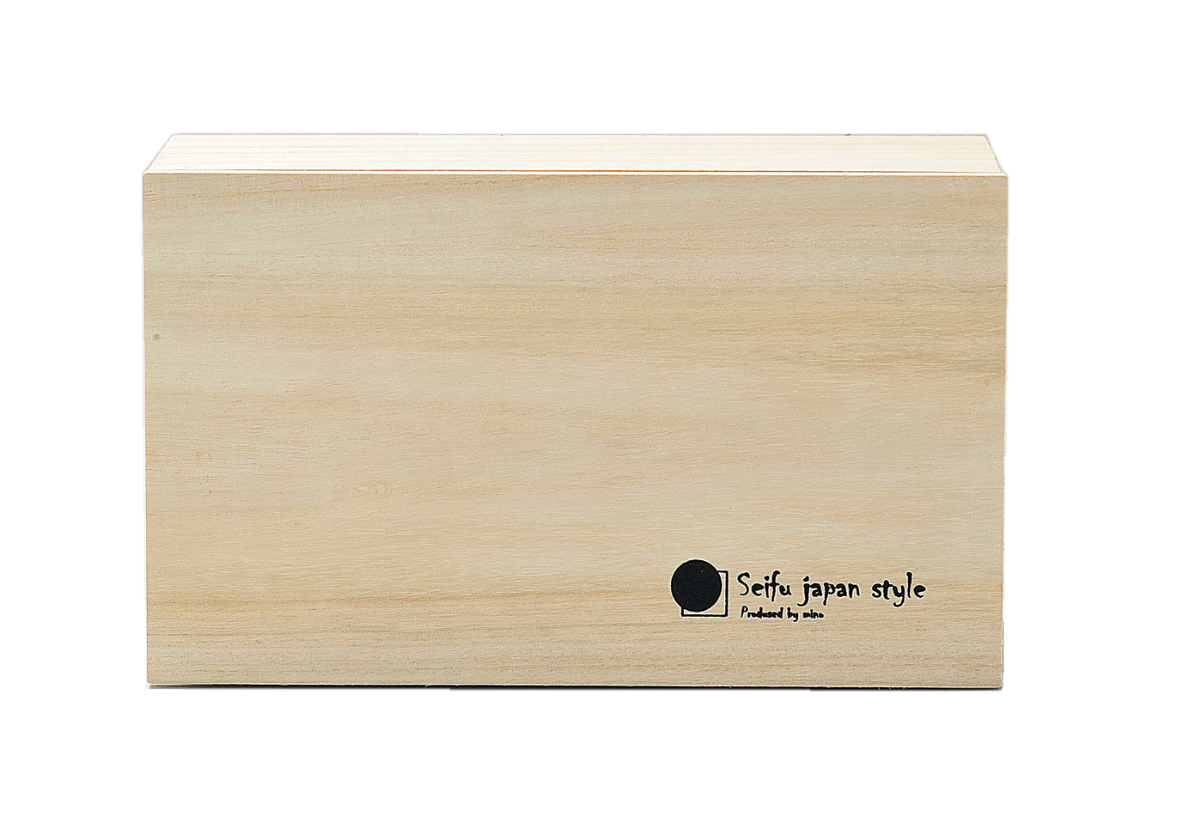



Gold and Silver Rock Cup
Fast & Secure Delivery from Japan to your Door [Shipping Policy]
Shop Safely with Encrypted Checkout and Verified Gateways.
Pairs well with

Gold and Silver Rock Cup
From Kiln to Hand – Sculpted Rock Cups That Echo Nature’s Touch
Designed to mimic the textures of stone and flowing ore, the Gold and Silver Rock Cup Pair channels the raw beauty of the earth into everyday moments. The matte black ceramic provides a tactile contrast to the shimmering metallic accents, while the solid shape offers a grounded, weighted feel in the palm.
Each cup is hand-glazed in an abstract, fluid pattern—no two are exactly alike. This individuality reflects the wabi-sabi philosophy: the beauty of imperfection and uniqueness. Whether you’re serving whiskey on the rocks, cold-brew coffee, or sparkling water, these cups transform casual sipping into a mindful ritual.
Crafted by artisans in Japan, this set of 2 cups are the product of Kinsho Kiln, to preserve their bold texture while delivering long-term durability. Their minimalist aesthetic pairs well with both modern and traditional spaces.
Product Information
Material
Care instructions
Maker
Note
FAQs
All you need to know about Japanese Pottery.
What types of traditional pottery are made in Japan?
Japan is home to several renowned pottery styles, including Mino ware (Gifu), Bizen ware (Okayama), Arita and Imari ware (Saga), Shigaraki ware (Shiga), and Mashiko ware (Tochigi). Each region has its own distinct materials, glazes, and firing techniques that reflect local history and aesthetics. Toki City in Gifu Prefecture is particularly renowned as the heart of Mino ware (Minoyaki)—the most widely produced pottery style in Japan.
What materials are used in artisan Japanese pottery?
Most artisan pottery in Japan is made from locally sourced clay, often mixed and refined by hand. Natural minerals and ash are used in glazes, and many pieces are wood-fired or fired in traditional climbing kilns (noborigama), producing unique surface textures and natural variations.
Are artisan Japanese pottery pieces safe for food use?
Yes. Authentic artisan pottery is made with food-safe, lead-free glazes and is carefully fired at high temperatures to ensure durability and safety. However, it's important to follow care instructions, especially for unglazed or porous ceramics.
What makes Japanese pottery different from Western ceramics?
Japanese pottery often emphasizes wabi-sabi—the beauty of imperfection—resulting in organic shapes, subtle asymmetry, and natural glazes. Unlike Western ceramics, which may prioritize uniformity, Japanese pieces often celebrate the individuality of each item, reflecting the artist's hand and the firing process.
How should I care for artisan-made Japanese pottery?
Hand-wash pottery with mild soap and avoid extreme temperature changes (like placing hot items into cold water). Some unglazed pieces may absorb moisture, so allow them to fully dry before storing. Avoid microwaves or dishwashers unless the piece is specifically labeled as safe for such use.
Do I need to season Minoyaki cups before using them?
For most Minoyaki cups, especially if they are fully glazed, seasoning is not required. However, if the cup has an unglazed interior or base, or a slightly porous finish, a simple seasoning process—known as medome—can help prevent stains, odor absorption, and hairline cracks over time.
To season a Minoyaki cup:
1. Rinse the cup gently with water (no soap).
2. Fill a bowl or pot with warm water and add a small spoonful of cooked rice or flour.
3. Submerge the cup and let it soak for 30–60 minutes.
4. Rinse again and let it air-dry completely.
This step helps fill microscopic pores in the ceramic, sealing the surface naturally and extending the life of your handcrafted piece. Always follow any care instructions provided by the maker.

